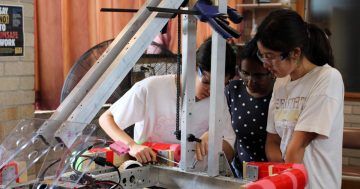Brian de Haaff*says that while formal mentoring programs seem to be going out of fashion, need for them is greater than ever.
 Think of your favourite teacher in life. Was it somebody from your career? Probably not.
Think of your favourite teacher in life. Was it somebody from your career? Probably not.
Most likely it was an influential teacher or university professor.
Formal mentors at work used to be common, but it is rare to find one at big organisations today.
This is affecting younger workers in particular. In one study reported in Harvard Business Review, every professional over 40 could name a mentor, but only a few younger interviewees could.
Recently, I asked people on social media if they think real mentors still exist.
The consensus was that finding a mentor is a rare experience.
Despite asking (even begging) for these types of relationships with leaders at work, they do not feel that employers put a priority on mentorship.
This longing is natural — one of the best ways to grow your career is to gain new skills and knowledge.
It is important for employers too.
In one survey of employees, 86 per cent of respondents said professional and career development benefits were important to overall job satisfaction.
I am sure this is not a surprise to you.
Yet there is a gap between what people want and what organisations are delivering.
In a Gallup survey of millennials, only 39 per cent strongly agreed that they “learned something new in the past 30 days that they can use to do their jobs better”.
Only 22 per cent of organisations have a formal mentoring program in place.
Yet we know that everybody wants to learn new skills and contribute in meaningful ways.
Employees will reward organisations who give them the chance to do so.
In a LinkedIn survey, 94 per cent of employees said they would stay longer at an organisation that invests in their career development.
So why is there a disconnect? One reason may be that developing formal mentorship and development programs takes time and money.
These efforts require leaders to understand where the organisation is headed and can map the programs that will help people gain those needed skills.
I know from experience this is hard work.
As the co-founder and Chief Executive of Aha!, I have put a lot of thought into building a learning organisation.
Helping our teammates grow professionally and personally is a linchpin of our culture.
Doing so across a completely remote, exceptionally high-performing team at one of the fastest-growing software companies in the United States certainly adds another layer of complexity.
Obviously, your organisation has its own complexities, but our approach to building a learning organisation has worked for us, and I am happy to share some of our insights.
Start early:
Each new hire’s training begins even before their first day on the job.
As soon as they accept the offer to become part of our team, we send them books that help explain the Aha! philosophy and the way we work.
Not only does this help the new hire feel like they are already part of the team, but it also emphasises the great value we place on learning.
On-board fully:
Some organisations give new hires an employee handbook and call that an on-boarding.
New teammates at Aha! are immersed in a four- to eight-week program.
Leaders from across the organisation contribute content dedicated to all aspects of Aha! — our product, our company, and our culture.
Teach and inform:
We place a high priority on keeping our completely distributed team informed and up to date.
On our weekly company-wide video meetings, department heads share developments and progress for their teams.
At our twice-yearly off-sites, leaders present the plan for moving forward and hold specialised training sessions for their teams.
This transparency and guidance give everybody the tools and context they need to get better and better at their jobs.
Individualise programs:
All group leads are required to have weekly one-on-ones with every teammate.
This is a great opportunity to discuss the current work and any wins or sticking points.
It also gives leaders the chance to mentor their teammates.
By providing tailored coaching, setting growth goals, and recommending learning opportunities, leaders can help teammates reach their next level of performance.
Encourage cross-functional learning:
Learning about other teams gives colleagues a holistic perspective.
It helps them understand their own part in the big picture.
This is why we host a monthly TED Talks-style event, where team leads give an in-depth presentation of a project or work style.
These opportunities for teammates to satisfy their curiosity are completely optional — and always very well attended.
Some leaders might be concerned that if teammates get great education on the job then they will just leave for bigger and better opportunities.
Sure, nobody wants to lose top talent, but the best leaders help their teammates outgrow their current position.
* Brian de Haaff is the Chief Executive of cloud-based software company Aha! He can be contacted on Twitter @bdehaaff.
This article first appeared on the Aha! company website.











